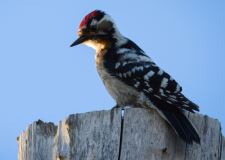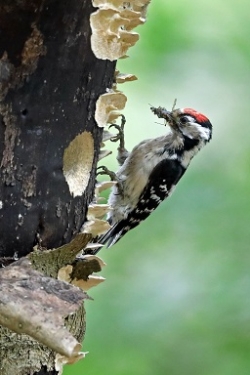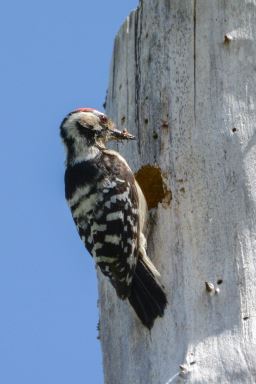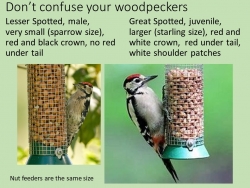Thanks to all of you who have already been in touch. We have had reports of sightings and drumming from the New Forest, North London and Lincolnshire already.
February and March is the best time to find breeding territories by visiting likely sites and listening for calling and drumming. Once they have settled on a nest site by mid-April they are very inconspicuous and secretive until they are feeding young in late May.
They can be found nesting in any woodland but seem to be more abundant in well wooded areas and woods with high levels of dead wood or woods associated with wetlands. They often nest near the edges of woodland or in woodland fringes. The best bet for finding breeding birds is to check out past sites. The birds seem very site faithful so often turn up in traditional sites over many years. Drumming and displaying drops off rapidly through the day so early morning visits seem to be best.
In general, the Lesser Spot drum is much softer and for a longer duration than Great Spot and seems to tail off at the end rather than ending with a flourish. But it is still possible to be confused by a soft drumming Great Spot. With patience, you can get to see the bird to confirm identity.
You can find examples of Lesser Spot calls and drumming on the xeno-canto website.




